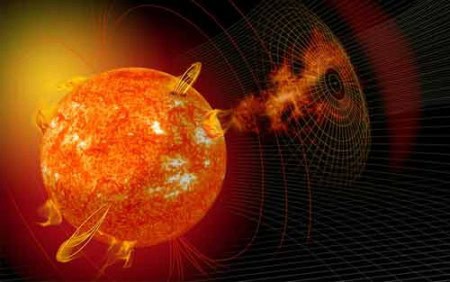Tokyo: With data from the Hinode satellite, astronomers in Japan have observed the strongest magnetic field ever directly measured on the surface of the Sun.
Astronomers at the National Astronomical Observatory of Japan (NAOJ) determined that the powerful magnetic field was generated as a result of gas outflow from one sunspot pushing against another sunspot, according to a study published in The Astrophysical Journal.
“HINODE’s continuous high-resolution data allowed us to analyse the sunspots in detail to investigate the distribution and time evolution of the strong magnetic field and also the surrounding environment,” said NAOJ fellow Joten Okamoto.
Magnetism plays a critical role in various solar phenomena such as flares, mass ejections, flux ropes, and coronal heating.
Sunspots are areas of concentrated magnetic fields. A sunspot usually consists of a circular dark core (the umbra) with a vertical magnetic field and radially-elongated fine threads (the penumbra) with a horizontal field.
The penumbra harbours an outward flow of gas along the horizontal threads. The darkness of the umbrae is generally correlated with the magnetic field strength.
Hence, the strongest magnetic field in each sunspot is located in the umbra in most cases.
Analysing data taken by the Solar Optical Telescope onboard HINODE, the astronomers noticed the signature of strongly magnetised iron atoms in a sunspot.
Surprisingly the data indicated a magnetic field strength of 6,250 gauss. This is more than double the 3,000 gauss field found around most sunspots.
Previously, magnetic fields this strong on the Sun had only been inferred indirectly.
More surprisingly, the strongest field was not in the dark part of the umbra, as would be expected, but was actually located at a bright region between two umbrae, the study said.
This strong field region was generated as a result of compression of one umbra pushed by the horizontal flow from the other umbra, the researchers said.
“Finally, the longtime mystery of the formation mechanism of a stronger field outside an umbra than in the umbra, has been solved,” Okamoto said.
IANS

